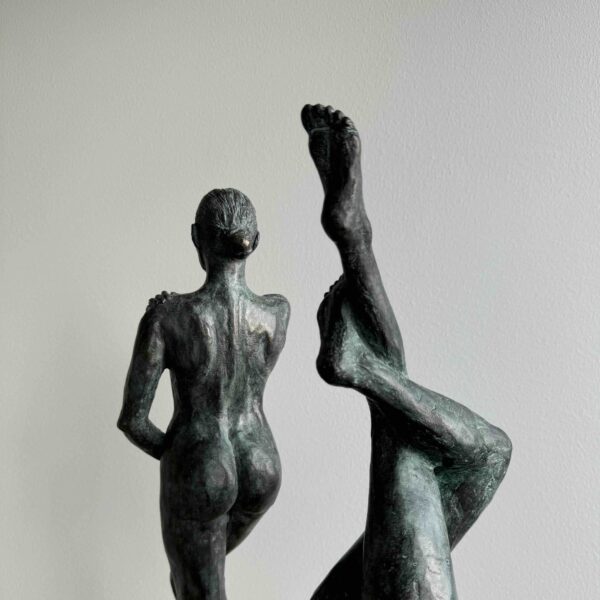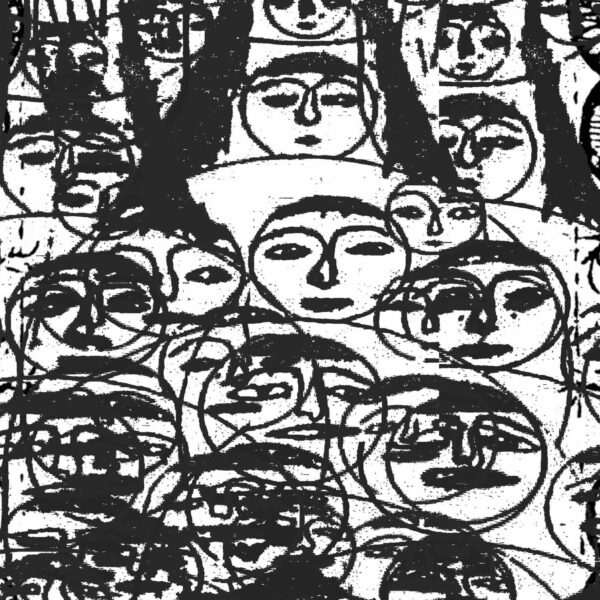Other World and the Beauty of Reimagining History
Other World is a psychedelic and surrealist digital artist. His work primarily transforms famous older paintings into new-age art with fresh storylines and pops of bright color. In this interview, we dive into his dual life, his love for Renaissance art, and his personal fiends. Please note, this conversation has been edited for brevity and clarity.
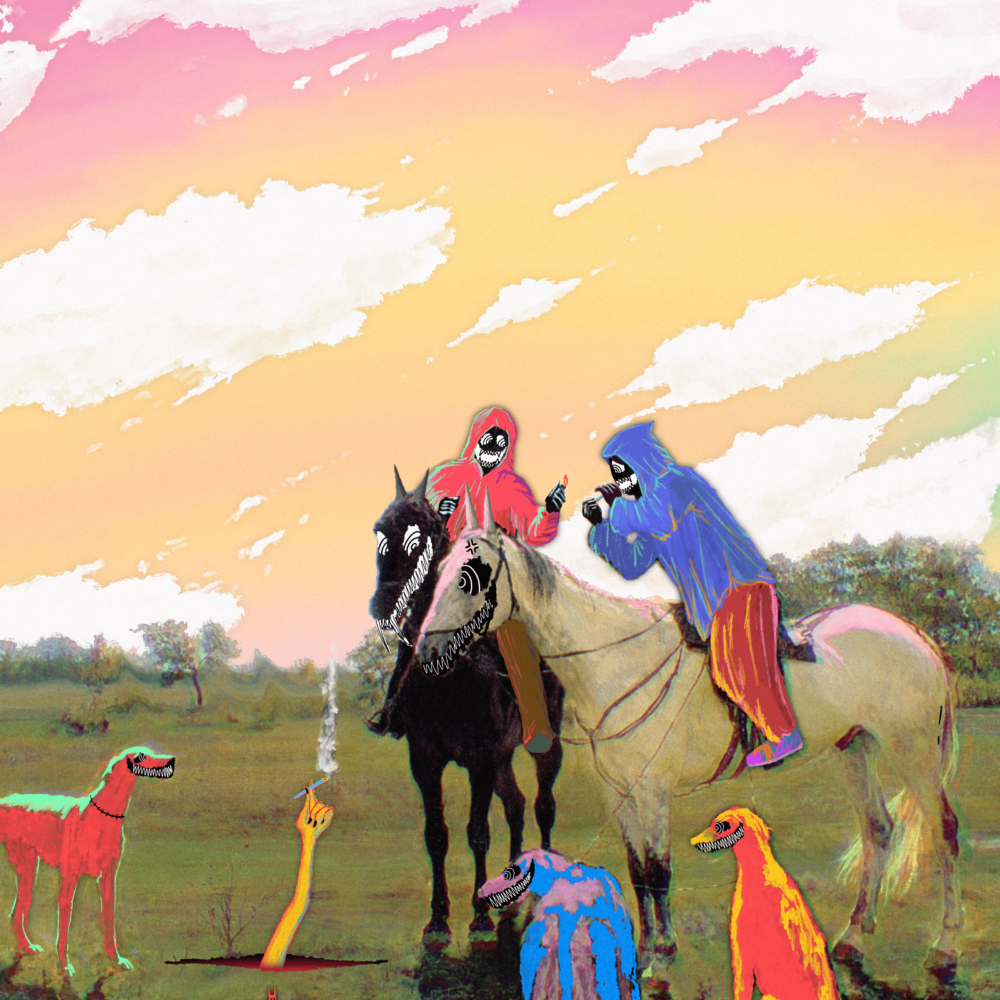
Q: Growing up, was art always a big part of your life?
OTHER WORLD: My mom was artistic. She would paint and crochet, and she used to play the piano. I was always doodling with a pencil, and I always gravitated towards drawing cartoons. I would kind of recreate and draw cartoons I was watching, or I would also come up with my own characters. It was initially just for fun.
Q: Did you think you’d grow up to be an artist?
OTHER WORLD: When I was younger, in first or second grade, I did want to become a cartoonist when I grew up, but I never really pursued that too much after. I started thinking I’d be a lawyer or a doctor. Then, when I got to undergrad, I went into bioengineering.
In my childhood, I did draw here and there. And, I did take art lessons at this studio where a family friend was the teacher for a period of time in middle school. It was traditional art, learning all the technical skills, that sort of thing. I went for less than a year, and I didn’t really like it near the end. It was oil painting and drawing statues. For all four years of undergrad, I didn’t really make much art, but I picked it up again right at the end. I was making some basic acrylic paintings on canvas and it is funny because the art I was making then doesn’t look anything like my art today.
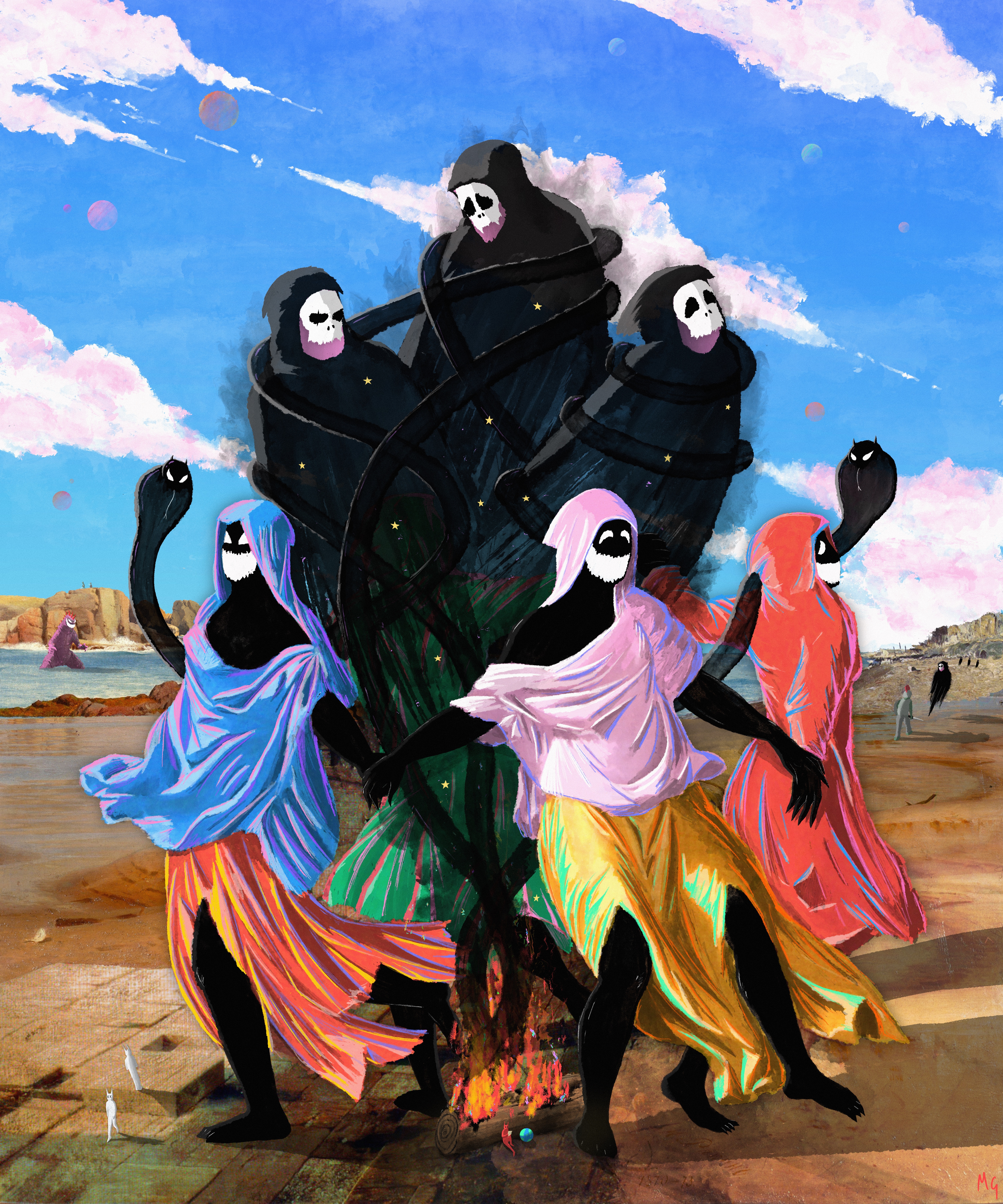
You can't blame the audience. If you keep thinking that the people need to wake up and realize that you’re a great artist, you're not going to get anywhere.
Q: Did you enjoy making physical works? How did that track lead you into creating your current digital projects?
OTHER WORLD: That type of stuff was just for fun. I would paint, for example, Rick from Rick and Morty or something. While I was doing that, I was also working in the lab, volunteering for my resume for later on when I was applying to a PhD, and that sort of thing. One of the people in the lab was, as a hobby, an artist. She had her own Instagram page and she told me that I should make one. A year after that, I made an Instagram page and posted my basic paintings, but sparsely. Once COVID started, I got into digital art. I tried picking up digital art and drawing the way I would draw on canvas before, and I just couldn’t. It didn’t feel good. Then, I started doing this collage approach where I wasn’t really drawing much. I was just taking pieces online and cutting them and putting them together and just creating new images. To me, that was really fun. I would make one or two or a day. And then after a while, I wanted to make something a bit more detailed and have a style, and draw a little bit more. At that point, I had gotten used to the iPad system, so drawing was natural. I started doing that, and then it led to the art today.
Q: In regards to your career path that spans the worlds of science and art, I’m curious if you have advice or words of wisdom for people who are going through that same thing and trying to figure out how to manage.
OTHER WORLD: I would say it was hard, before NFTs, to become a full-time artist. I mean, I have some friends that went to art school to become an artist and they’re struggling to become full-time artists. So even through formal training, it’s difficult. If you have other interests, like science for example, you could pursue both interests while making your artwork. I’ve been pursuing both. I’m doing a PhD in bioengineering full-time. I’m also making art. You can do both of them. My advice would be– do both until you see the sustainability of your art, and then you can become a full-time artist. That would be the safest route. Of course, there’s people that might be more used to taking risks, and then it works out. Sometimes, it doesn’t. It’s just how art is. I think one thing that is really important is, it’s good to be confident in yourself, but everybody’s audience is pretty much the same. You can’t blame the audience. If you keep thinking that the people need to wake up and realize that you’re a great artist, you’re not going to get anywhere. You have to change and improve your style so that the audience does fall in love with it, if you want to be successful with that audience. The audience is not going to change for you. That would be my advice to artists in any career, any passion, any field– to take it into their own hands and not blame the audience for their success.
Q: You were making digital art and sharing it on Twitter, how did you find NFTs from that point and become involved with them?
OTHER WORLD: I found NFTs through Twitter. When I was posting art, I started following these artists and this and that. And then I saw a few of these artists that I like post NFTs and how they maybe sold some pieces for one ETH, two ETH, that type of thing. I saw some of the artists posting NFTs and selling work. They had good work, and I felt like mine was just as good. I was confident in my work, so I was like, okay, I’m going to do this. That’s how I got to NFTs.
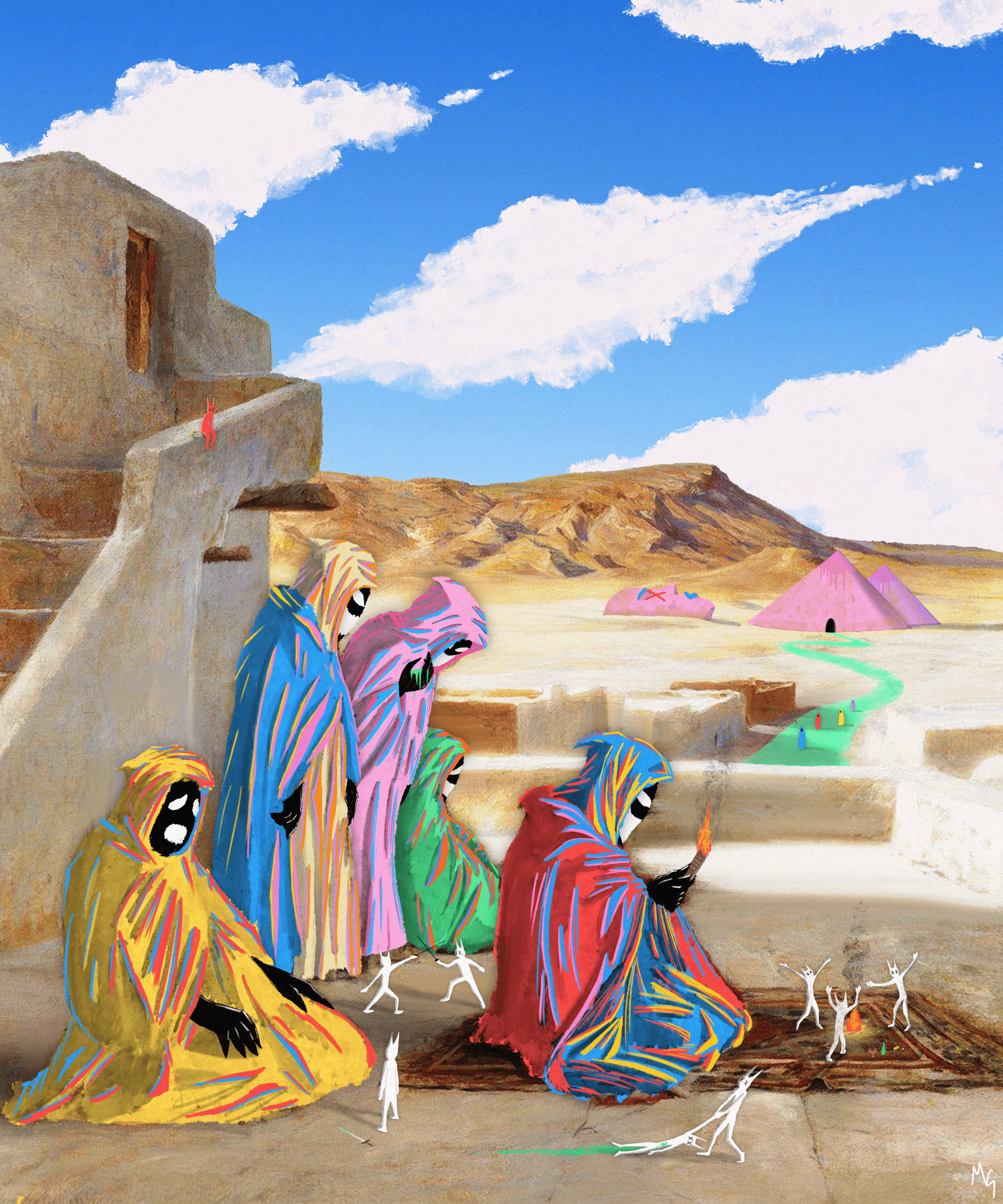
Q: Can you talk a little bit about the development of your style?
OTHER WORLD: Ever since I started doing digital art, my work has always been based on taking existing images or art or photography and re-imagining it, creating this other world with it. I was making this really quick art, but I felt like it was just art that was for social media. When I was looking at that art and looking at art that is in museums and galleries, I couldn’t see the connection. I couldn’t see my art being there. It was for a different purpose, right? It was for this social media type of thing.
I wanted to change that and make art that took more time, had more detail. I wanted my work to be something you could see in a gallery or a museum one day. That’s the mentality I had. I did want to create my own characters, because I always used to like drawing characters. In one piece, I saw cloaks on some of the subjects. I just colored them and it looked cool, and then I went with the idea of developing the hooded characters, which I call fiends. I spent time over the course of a few months developing that style. I can’t pinpoint and say exactly one thing that started it, but it was just this gradual thing.
Q: A lot of your art feels very biblical while also feeling out of this world. It feels almost like it’s supposed to give you a message, or paint a scene where I need to understand what the story being told is or what the moment being captured is. What are some of those themes you are playing with?
OTHER WORLD: I would say it is intentional. I like creating scenes with a lot of action. I do take works that I connect with, usually from Renaissance-era artists. These works on their own are very grand and very emotional. Many of them are tied to the Bible, or have some mythical aspects to them. When I’m recreating these pieces, I still want to keep those elements, but maybe alter the moral of the story or change the setting, maybe mess with the overall aesthetics of it, while keeping some of the composition. I was never too big into the bible or this and that. I’ve never read it and I don’t know a lot of the stories. I try to make art that touches upon some of my views about humanity and life in general
Q: Can you talk a little bit about the symbolism of some of the recurring characters that are in your pieces?
OTHER WORLD: Yes, the characters with the colorful hooded cloaks are the fiends. I really like the style and the feeling of drawing them, it really pops out and contrasts with the colors of the paintings I based them off. Usually these renaissance paintings are pretty realistic, and some of them do have a lot of color, but it’s realistic color, whereas the fiends pop out and contrast with that. I draw the characters as a mirror of humanity– maybe as the dark side of humanity, but that’s also a natural side of humans. There is a lot of violence and many treacherous things happening in these pieces, and that’s usually what I like to capture. There are some other characters, like the grim reaper. There are the little small devils that I draw that are almost in their own little world. Sometimes they interact with the larger fiend characters, but I like to draw some other little scenes with just those little guys. I do have other characters sometimes that are not related to the fiends.
I draw the characters as a mirror of humanity– maybe as the dark side of humanity, but that’s also a natural side of humans.
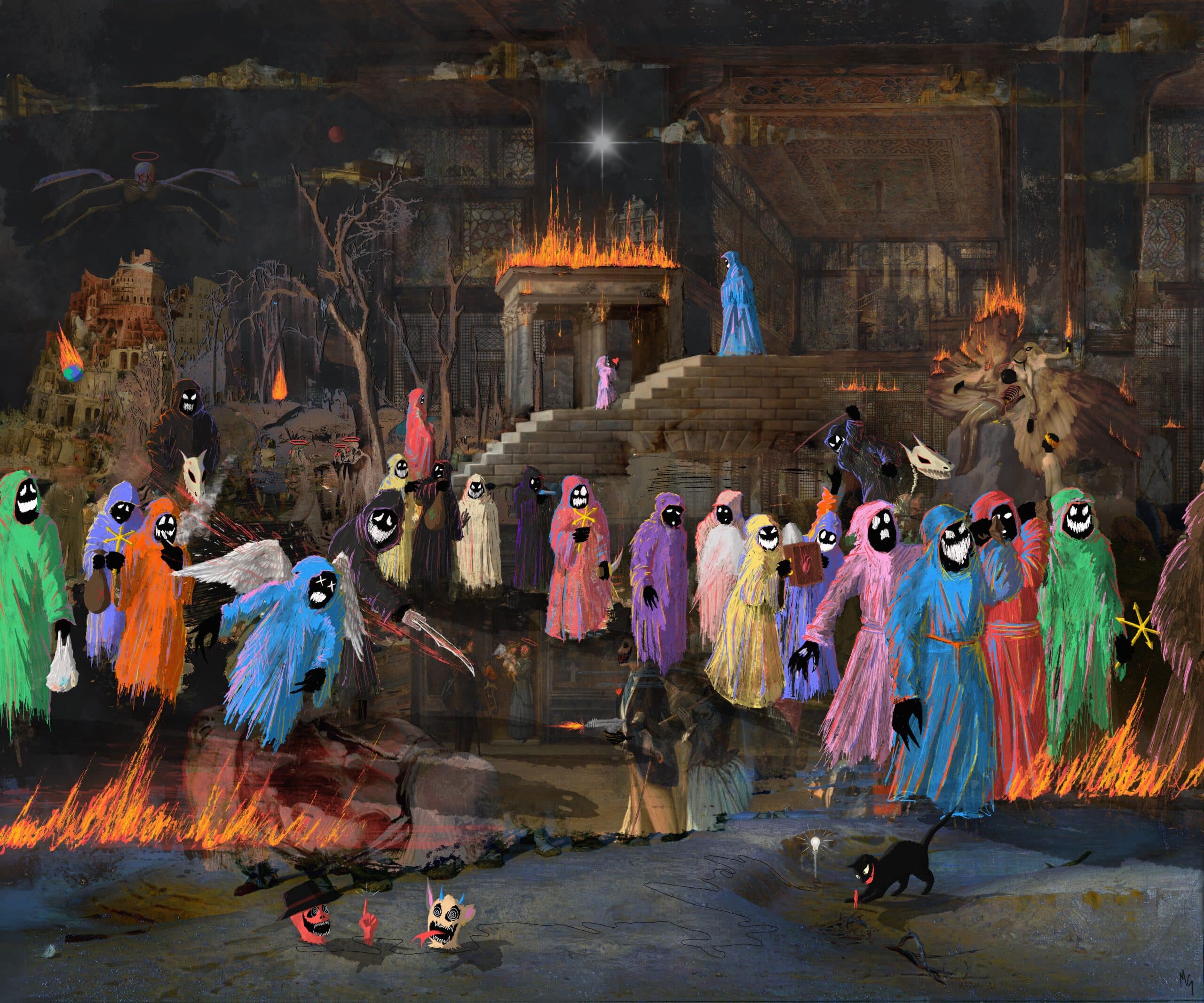
Q: Do you feel at all pressure to stay within a certain style?
OTHER WORLD: Yeah, there’s always pressure. If you do find a certain style successful, you develop a supporter base of people who are fans of that style. I don’t feel too much pressure to stay with this style, and I still feel free to explore other styles, but I do want to keep that feeling alive and have people recognize work that I make as mine– without having my name attached to it. I don’t feel like I’m going to lose my fan base if I try something else or any of that.
Q: Can you tease your next piece? What are some of the themes or visual styles you’ll be touching on?
OTHER WORLD: I’m taking a bit more of a chaotic approach, and I’m also drawing the fiends a little bit differently. Their features may be a bit more exaggerated, like bigger faces, bigger hands, that sort of thing. I’m not finished with it yet, and the story develops as I go through the piece, but overall I think it’s going to be a darker piece. It’ll also be a bit violent and have a lot of contrast in it. Yeah, that’s what I’ll say right now.
Other World is referring to his latest piece, “Perfect Chaos.”
